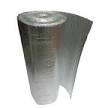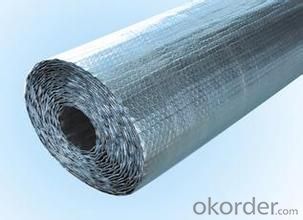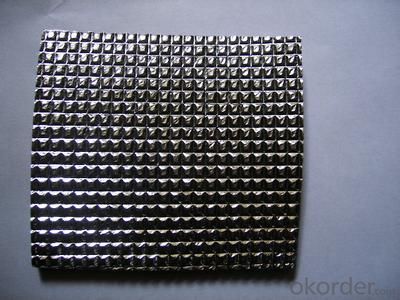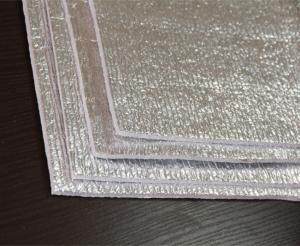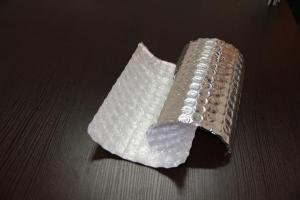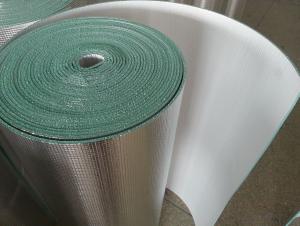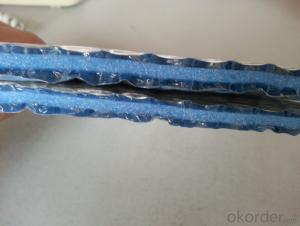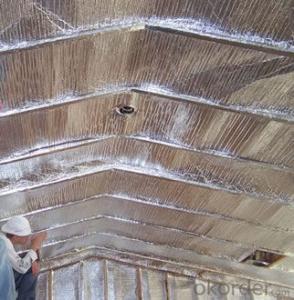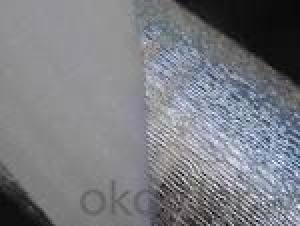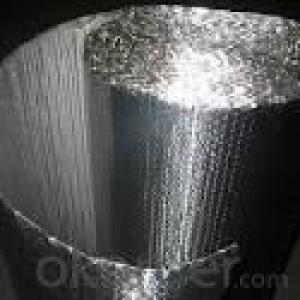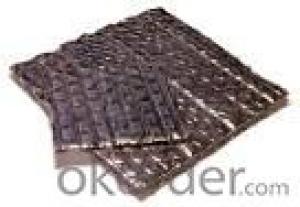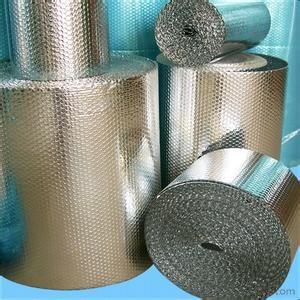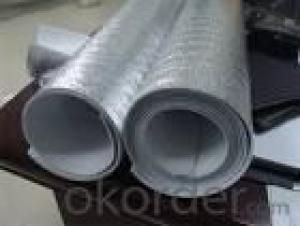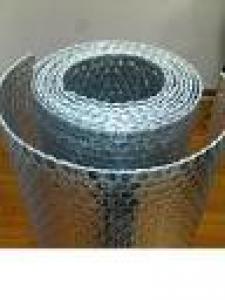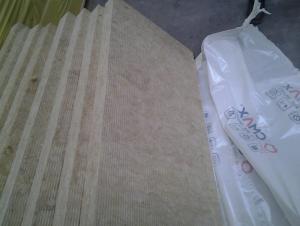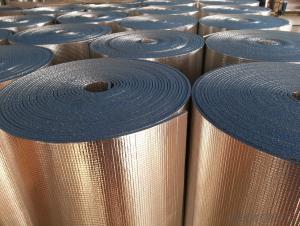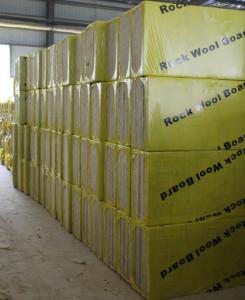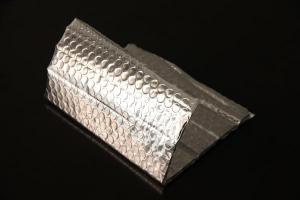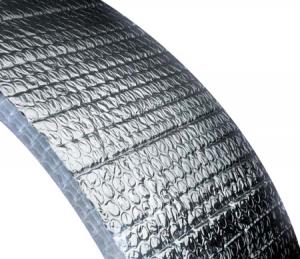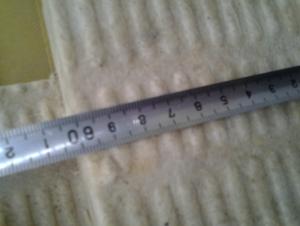Roofing Insulation Rolls - Aluminum Foil Coated Bubble Insulation Type 23
- Loading Port:
- Shanghai
- Payment Terms:
- TT OR LC
- Min Order Qty:
- 10000 m²
- Supply Capability:
- 100000 m²/month
OKorder Service Pledge
OKorder Financial Service
You Might Also Like
Bubble Insulation Benefits:
Reflects 96% of radiant heat
Non-toxic / Non-carcinogenic
Does not require protective clothing or respirators to install
Durable and lightweight
Does not compress, collapse or disintegrate
Vapor and radon retarder
Easy to cut and install
Permanent and maintenance-free
Does not provide a growth medium or nutritive value for fungus, insects, or rodents
Does not support the growth of mold or mildew
Not affected by moisture or humidity
Lowers heating and cooling costs year round
Bubble Foil Application:
Metal & Steel Buildings
Homes
Roof Underlayments
Cathedral Ceilings
Crawl Spaces
Hot Water Heaters
Basement Walls
Floors
Garage Doors
Concrete slabs
Driveway snow melts
Pole barns
Post frame buildings
Poultry barns
Animal kennels
Temperature sensitive storage areas
Air Bubble Foil Insulation Tech Data:
Material Structure: AL/Bubble/AL | ||
Bubble Size:D10mm*H 4mm(10*2.5/10*4/10*6/20*7/25*10)choose the bubble size | ||
Bubble Weight:0.13kg/m2 ( can be customized ) | ||
Roll Width:1.2m (lenth can be customized) | ||
PROPERTIES | TEST DATA | UNIT |
Thickness | 3.5-4 | mm |
Weight | 250 | g/m2 |
Emissivity | 0.03-0.04 | COEF |
Thermal conductivity | 0.034 | w/m0 |
Apparent Density | 85 | kg/m3 |
Reflectivity | 95-96 | % |
Water Vapour Transmission | 0.013 | g/m2kpa |
Corrosion | doesn't generate | |
Tensile Strength(MD) | 16.98 | Mpa |
Tensile Strength(TD) | 16.5 | Mpa |
- Q: Help please, this home had a water pipe from meter brake in the basement as it was unoccupied/empty, the owner/builder replaced all the drywall, insulation, flooring, carpet, tile, roof, windows, hot water tank, furnace, bathroom and kitchen cabinets, new paint on all, basement ceiling was spray painted black (to hide something or to seal it?). the neighbor says the home was gutted and mold tested three times, its completely redone basically a new home inside, feedback please, it "looks" great
- the only element i will think of of, is your carpet takes up allot of the moisture that comes into your homestead, so given which you took that carpet up, your having extra of a buildup on the tile, even nevertheless the flooring would desire to not be moist, they are nonetheless taking moisture in throughout the air. Bleach will help kill the mould, not on the plant life nevertheless, they make sprays for that at any homestead progression keep. desire this allows.
- Q: this room has an aluminum roof and hardwood siding. All the heat hit the aluminum roof
- With Reynolds wrap.
- Q: p/t deck on a commercial rubber roof do we need closed cell insulation under deck to protect rubber?
- You don't need it to protect the rubberoid roof however considering the relatively low cost of the closed cell foam it would be cheap insurance to add it. A more pressing concern would be the drainage details.
- Q: ... building code max. (R-50)???
- you need ventilation. the insulation is to keep heat i the living area of your home, your attic should be as cold as outside. make sure you have good soffit vents(intake) and good ridge or roof vents(exhaust). if you already have proper ventilation holes then make sure nothing is blocking them. many times folks push the insulation too far to the ends, blocking the soffit vents. you're loosing heat from your home into the attic which melts the roof snow and the outside temp then quickly turns this into ice. proper insulation as well as ventilation work hand in hand to combat this.
- Q: I live in the top most floor of a flat. Is it worth to insulate the roof (from inside) with styrofoam(thermocole) to reduce the airconditioning load. Is it really economical with respect to cost of insulation and savings gained? Any experiences?
- if u mean roof as just below the shingles this is not recommended as it will cause the shingles to become very hot and prematurely fail,,the best way to lower the heat in an attic is ventilation,,if u have an attic its best to insulate the floor of the attic and lots of ventilation
- Q: I am building a porch roof over an existing patio. The rafters are fabricated I-beams. I plan on putting aluminum soffit under the I-beams. On top of the roof I would like to put down a metal roof. I already put down 3/4" OSB and a rain/ice barrier. Do I need insulation and/or ventilation on top of the rain and ice barrier, or can I get away without it?
- Its a outside patio, are you going to enclose it for living space? If not don't bother to insulate and for ventilation there is soffit that comes with vent holes in it. Add; no it will not cause a moisture problem, i had a patio with a open bottom metal roof and had no problems and i live in Florida.
- Q: I have a split house with an attic where I have insulation on attic floor, but the house seems to be cold still, Can I add insulation to the roof of the attic? If so, any options? Thank you.
- Its wide-spread to have a insulated attic.. I once said a neighbor--that used a tremendous exhaust fan..and his roof became bowed.. He also would use alot of firewood in his abode.. i imagine that moisture by some ability--damaged the attic area--/
- Q: We had a water leak in our pipes in our foundation and had to re-route our pipes along our roof. We have tried some really basic insulation for piping, but it usually deteriorates very quickly due to sun light and wind. What are some ways we can insulate our pipes effectively without having to re-insulate every month? This has to be something fairly simple and inexpensive. We aren't looking for perfect insulation, just something that will keep the water warm in the winter and cool in the summer.
- they sell insulation at the home improvement stores. if you have tried that type then you will need to call a proffessional to insulate with fiberglass and wrap with tin protective cover. depends how cold it gets you may have to use heat tape also.
- Q: attic insulation
- Blow in insulation is so easy and cost effective, do it yourself. Machines can be rented at Lowes, HD, etc where you buy the material.
- Q: attic is 400 sq ft.there are 4 round 6'' Vents in soffit,and 2 roof vents-12"x12".Rock wool,blown in,R/30 NO VAPOR BARRIER.Why the mold?no gable or ridge vent either.How do i fix this?There are baffles in attic,rafters are not blocked.
- You still don't have enough attic ventilation. Definitely need more soffit vents. Roof mounted turbine vents that turn in the wind help suck more air through the attic. This coupled with at least one gable end vent should stop further mold. Removing old mold is a hassle, but can be done using diluted bleach in a lawn pump sprayer. A respirator will be needed to ensure you can breathe while applying the bleach solution.
Send your message to us
Roofing Insulation Rolls - Aluminum Foil Coated Bubble Insulation Type 23
- Loading Port:
- Shanghai
- Payment Terms:
- TT OR LC
- Min Order Qty:
- 10000 m²
- Supply Capability:
- 100000 m²/month
OKorder Service Pledge
OKorder Financial Service
Similar products
Hot products
Hot Searches
Related keywords



